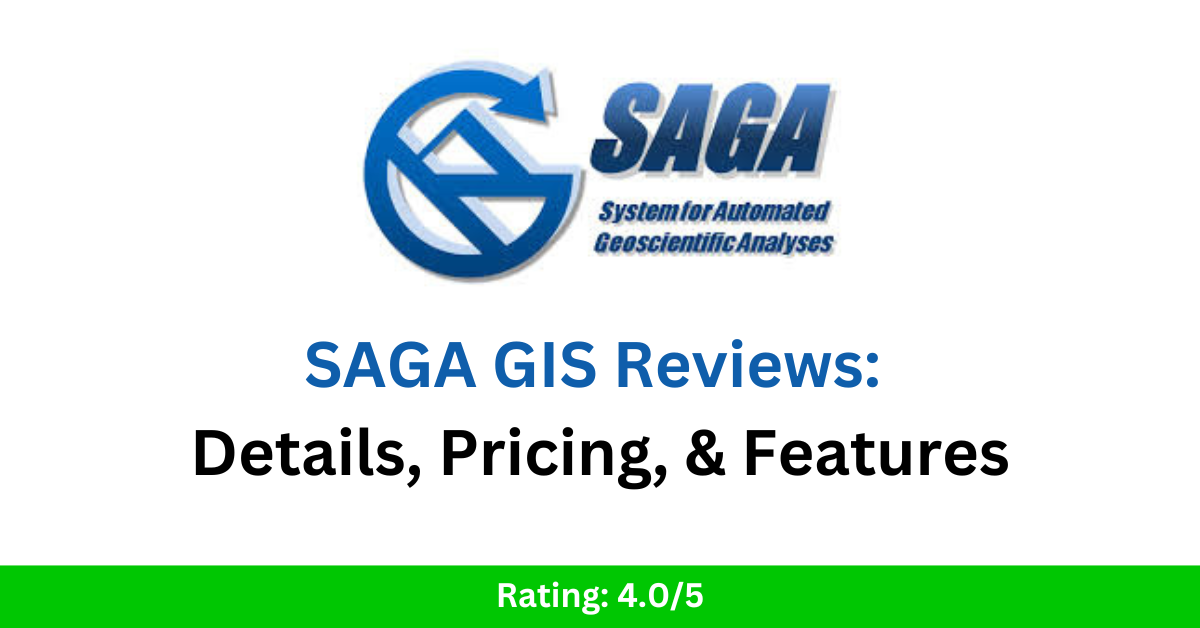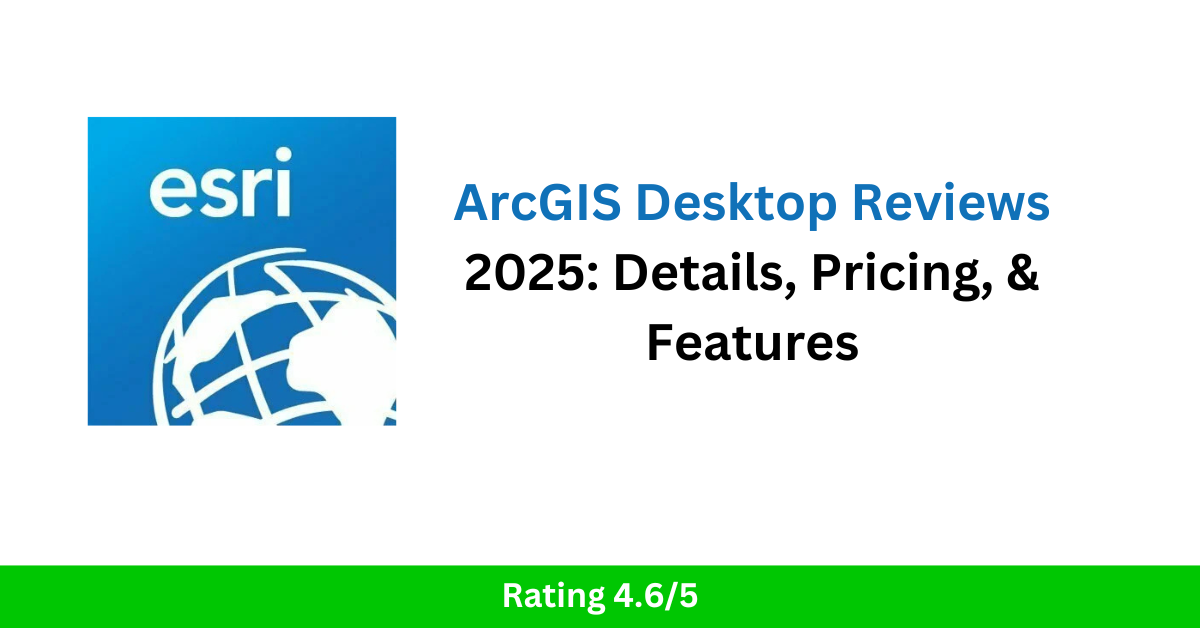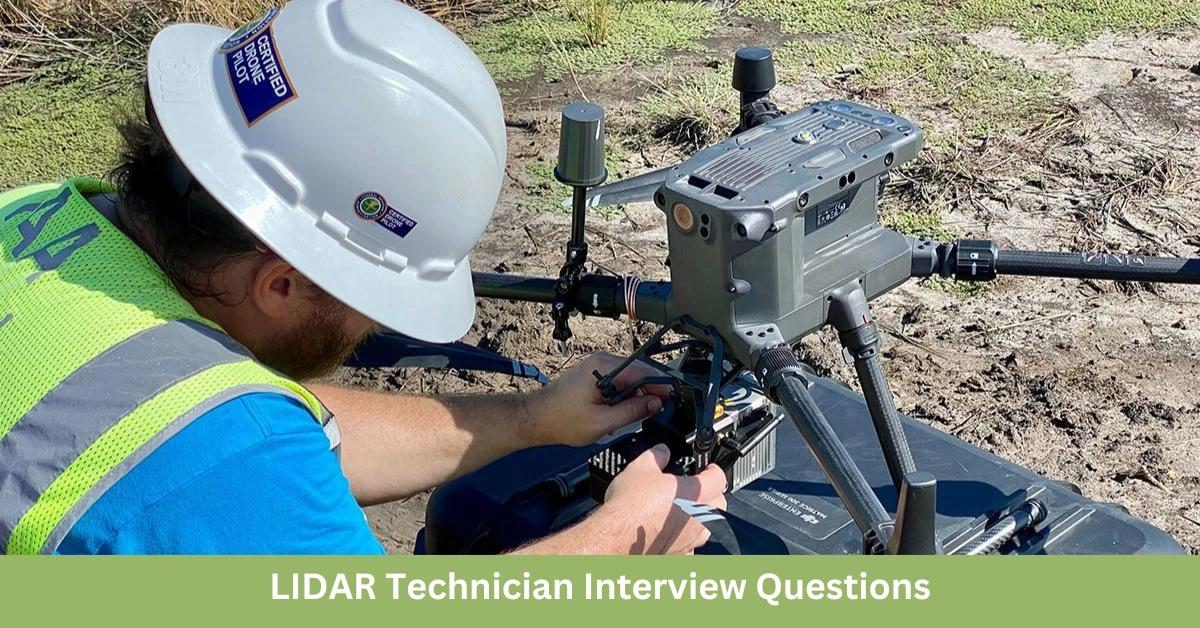SAGA GIS Reviews 2025: Details, Pricing, & Features
Looking for an open-source GIS solution that offers powerful spatial analysis and mapping features? SAGA GIS might be the perfect choice for you. In this 2025 review, we dive deep into the details of SAGA GIS, exploring its key features, capabilities, and pricing to help you determine if it’s the right GIS software for your needs. Whether you’re a researcher, GIS professional, or hobbyist, SAGA GIS provides a range of tools designed to enhance your geospatial analysis and data management. Keep reading to learn more about why SAGA GIS is gaining popularity among users worldwide. SAGA GIS Review SAGA (System for Automated Geoscientific Analyses) GIS is a powerful open-source Geographic Information System (GIS) software, designed to assist in spatial analysis and mapping. It offers a wide range of tools for geospatial data management, analysis, and visualization, with an emphasis on ease of use and flexibility. SAGA GIS is popular among researchers, environmental scientists, and GIS professionals who need an efficient, free, and customizable solution for geospatial tasks. GO TO SAGA GIS Rating: 4.0/5 Pros and Cons of SAGA GIS Pros Open-Source and Free: SAGA GIS is completely free to use and open-source, which makes it an excellent choice for those on a budget, students, or institutions that need a GIS solution without licensing costs. Comprehensive Toolset: It offers a wide range of over 700 geospatial analysis tools, including those for raster processing, terrain analysis, hydrological modeling, and geostatistics, making it highly versatile. Customizable and Extensible: SAGA GIS allows users to develop custom scripts and tools using Python, making it highly customizable. Users can extend its functionality to suit their specific needs. Active Community: The open-source nature of the software fosters an active user community. The community regularly contributes updates, new plugins, and support through forums and tutorials. Lightweight and Efficient: SAGA GIS can handle large datasets efficiently, with a design that ensures fast processing without requiring significant computing power. Cons Steep Learning Curve: Despite its powerful toolset, SAGA GIS can be overwhelming for beginners, especially with its complex interface and large number of tools. New users may need to spend time learning how to navigate the software. Interface Is Less Intuitive: While functional, the user interface is not as modern or user-friendly as some other GIS software, such as ArcGIS or QGIS. It may take time to get used to its design and workflow. Limited 3D Capabilities: SAGA GIS has some 3D functionality, but it is not as robust as more specialized GIS platforms like ArcGIS Pro, which offers advanced 3D modeling and visualization. Occasional Stability Issues: Although the software is generally reliable, some users have reported occasional stability problems, particularly when handling very large datasets or running complex analyses. Limited Commercial Support: As an open-source project, SAGA GIS lacks official commercial support. Users may need to rely on community resources for troubleshooting and help. Read Also: Google Earth Pro – Explore and Discover the Planet Key Features of SAGA GIS Comprehensive Spatial Analysis Tools: SAGA GIS includes a broad selection of spatial analysis tools such as terrain analysis, hydrological modeling, and raster-based data processing. Advanced Visualization Options: The software offers high-quality visualizations for spatial data, including 2D and 3D maps, as well as dynamic charts and graphs to represent geospatial patterns. Open-Source & Extensible: Being open-source, SAGA GIS allows users to modify and extend its functionality. It supports custom scripting using Python, and the community continually contributes to improving the software. Support for Various File Formats: SAGA GIS supports a wide variety of file formats including raster data, vector data, and geospatial databases, making it versatile for different GIS tasks. Processing Efficiency: The software is known for its efficient processing capabilities, allowing users to handle large datasets without compromising performance. Read Also: ERDAS Imagine – Revolutionizing Geospatial Imaging and Analysis History of SAGA GIS SAGA GIS (System for Automated Geoscientific Analyses) is an open-source geographic information system that has evolved over the years to become a powerful tool for spatial data analysis. Here’s a brief look at its history: Initial Development (2000): SAGA GIS was first developed in 2000 by the Institute of Geography at the University of Hamburg, Germany. It was created as a response to the need for a more accessible and user-friendly GIS tool for geoscientists and researchers. The software was intended to provide a flexible and extensible platform for geospatial analysis. Early Focus on Geoscientific Applications: The initial versions of SAGA GIS were highly focused on geoscientific analysis, offering tools for terrain analysis, hydrology, and environmental modeling. Its strength was in raster data processing, particularly for applications involving terrain models and the analysis of spatial patterns. 2000s: Expansion and Open Source: SAGA GIS started gaining traction in the early 2000s as an open-source alternative to commercial GIS software. In 2002, the software was officially released as open-source under the GNU General Public License (GPL), which allowed users to freely modify and distribute the software. This helped grow its user base and development community. Community-Driven Development: The open-source nature of SAGA GIS led to the development of an active community of users and developers. Many contributed plugins, enhancements, and new features, allowing the software to continuously evolve and expand its toolset. Over the years, SAGA GIS has incorporated tools for a wide range of disciplines, from hydrology to remote sensing and geostatistics. Late 2000s and 2010s: Continuous Improvement: As GIS technology progressed, so did SAGA GIS. The software began integrating support for vector data analysis, and various usability improvements were made. Features like the use of scripting languages (Python) for custom tool development were introduced, greatly enhancing its functionality. The addition of more user-friendly interface elements and better data handling capabilities helped increase its appeal for a broader audience. 2020s: Ongoing Enhancements and Support: SAGA GIS has continued to thrive as an open-source GIS solution, with ongoing development focused on improving its stability, adding new analytical tools, and ensuring compatibility with modern GIS standards. It remains a key resource for scientific, academic, and research communities, … Read more



